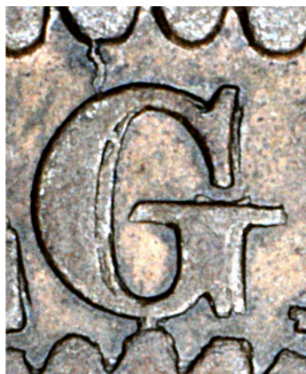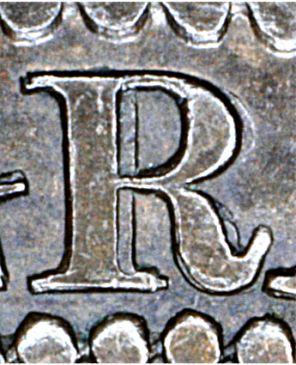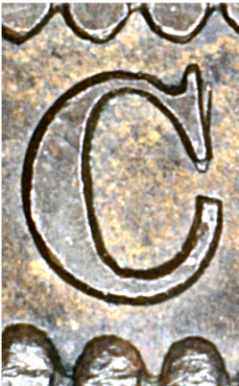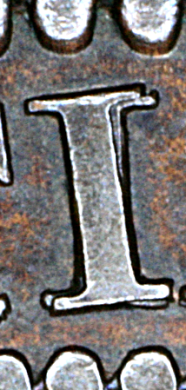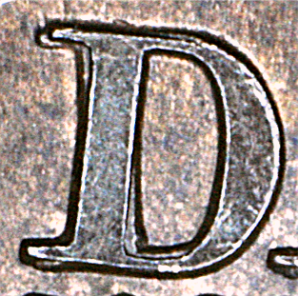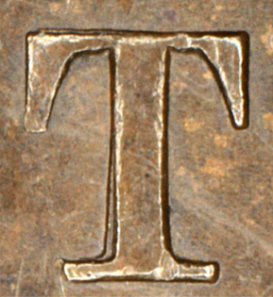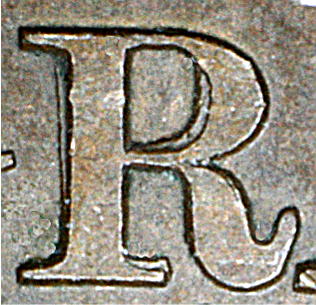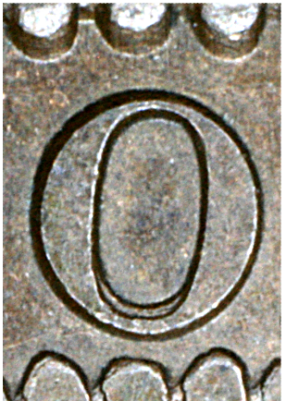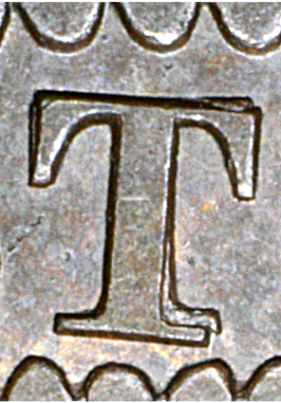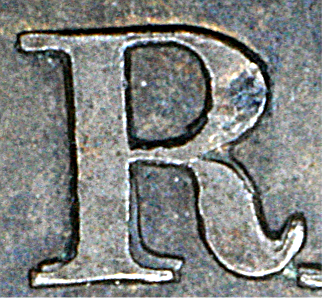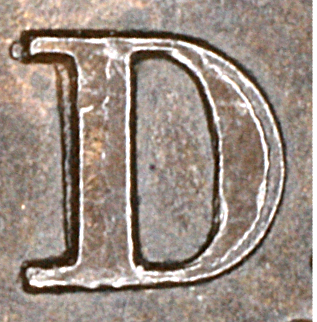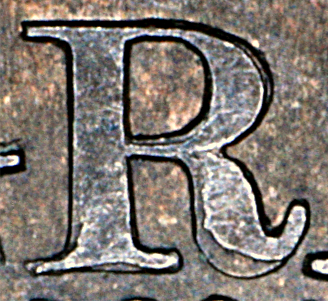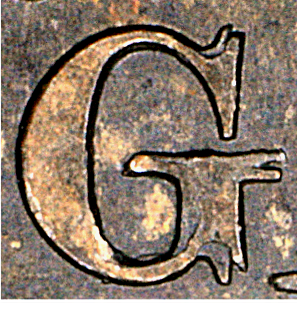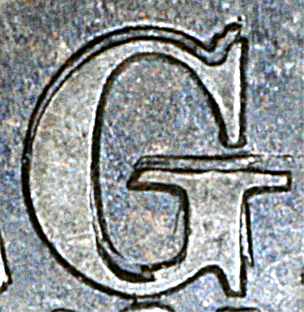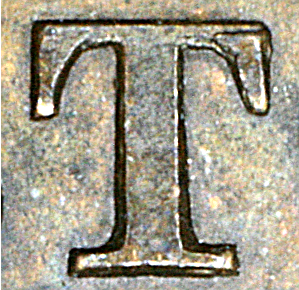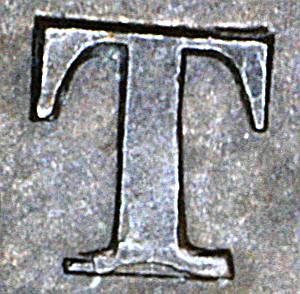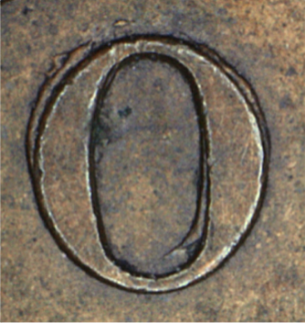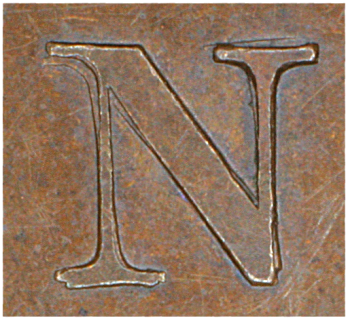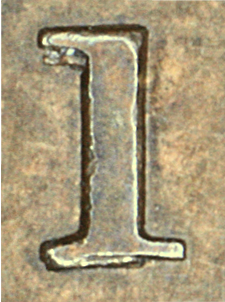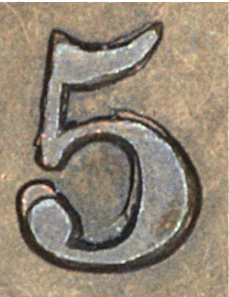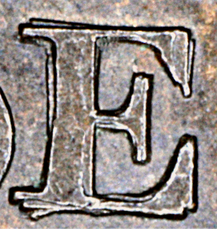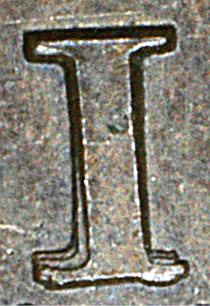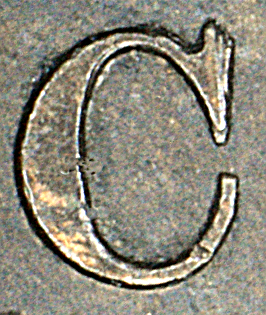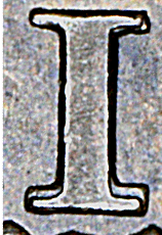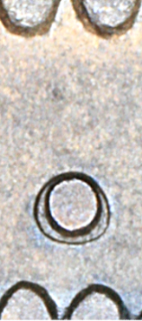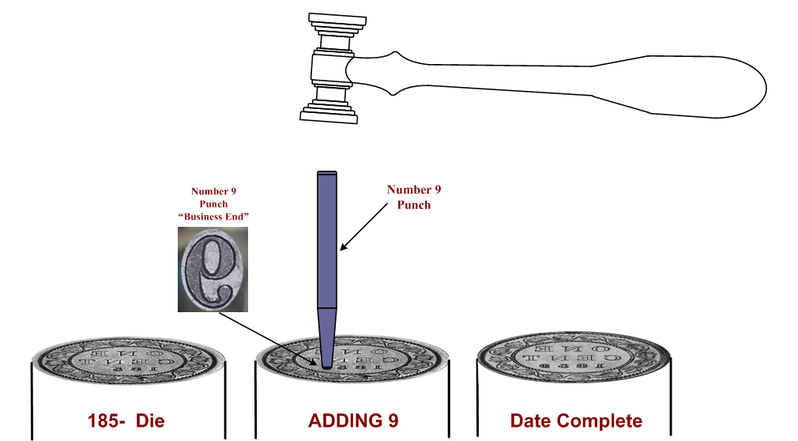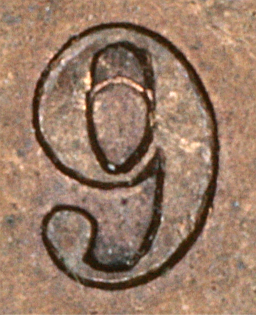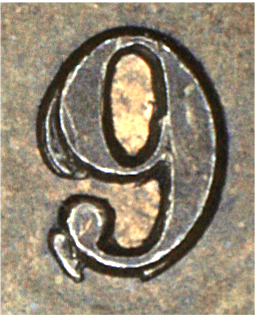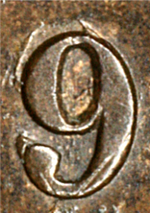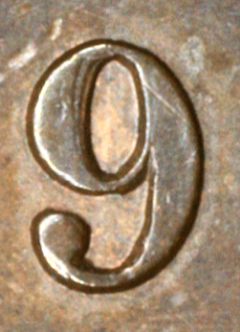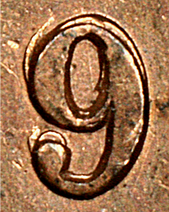SECTION FOUR
DIE FINISHING/REPAIRING LETTERS AND NUMERALS
Die Finishing and The Implications for Die Varieties
We’ve seen how the obverse and reverse punches for the Provincial cent gradually deteriorated during the process of die sinking and thereby passed flaws on to the dies. We’ve also identified seven states for the reverse punch as it was used to sink the 185- dies that would become the 1859 Narrow 9s. Indeed, if no changes were made to the reverse dies after they were freshly sunk, there would only be eight reverse die varieties for this date.
Now, we’ll see how the die flaws were sometimes corrected in the next step in the die making sequence, die finishing, and how these corrections substantially increased the number of die varieties seen in the Provincial cent coinage. Die finishing (the process of bringing a freshly-sunk die to the final state ready for use in the coining press) consisted of repairing defective portions of the design, smoothing the die table and heat treating the die to bring it to the required hardness for coining.
Now, we’ll see how the die flaws were sometimes corrected in the next step in the die making sequence, die finishing, and how these corrections substantially increased the number of die varieties seen in the Provincial cent coinage. Die finishing (the process of bringing a freshly-sunk die to the final state ready for use in the coining press) consisted of repairing defective portions of the design, smoothing the die table and heat treating the die to bring it to the required hardness for coining.
Repairing Letters and Numerals
The practice of employing slightly flawed obverse and reverse punches in the production of the Provincial cent dies reflected a longstanding policy of the Mint. An otherwise good punch was considered too precious to be retired just because of defects like letters or numerals with missing serifs or broken arches. So, the broken characters were repunched in each die. This was done, at least initially, with the same hand punches that had been used to add the legends and date to the matrices in the first place.
Each defective letter in the die served as a guide for the placement of the hand punch to perform the repair. Consequently, it was much faster to repunch the legend in a die than it was to punch the letters into blank spaces (as had been done on the surface of the original matrix). Multiple blows were given to the hand punch to sink its design to the same or deeper depth as the original letter. In many instances the repunching was performed skillfully enough to leave little or no sign that a repair had been made. However, if one or more blows were given when the hand punch was significantly out of register, then clear evidence of the repair would show. Here are some cases where repair by repunching is clearly evident:
In some cases the character (digit or letter) punch was laterally displaced during repunching (resulting in a double, triple or even quadruple offset). The displacement could be vertical, horizontal, rotational or a combination:
Each defective letter in the die served as a guide for the placement of the hand punch to perform the repair. Consequently, it was much faster to repunch the legend in a die than it was to punch the letters into blank spaces (as had been done on the surface of the original matrix). Multiple blows were given to the hand punch to sink its design to the same or deeper depth as the original letter. In many instances the repunching was performed skillfully enough to leave little or no sign that a repair had been made. However, if one or more blows were given when the hand punch was significantly out of register, then clear evidence of the repair would show. Here are some cases where repair by repunching is clearly evident:
In some cases the character (digit or letter) punch was laterally displaced during repunching (resulting in a double, triple or even quadruple offset). The displacement could be vertical, horizontal, rotational or a combination:
Examples of Laterally Displaced Repunches
Examples of Rotationally Displaced Repunches
Examples of Mixed Laterally/Rotationally Displaced Repunches
Sometimes the character punch was not driven deeply enough to fully cover the evidence of the original broken character (resulting in at least part of the broken character remaining in higher relief on the coin):
Examples Where Part of the Original (Deteriorated) Letter Still Shows
A variation on the above is where the letter punch was tipped compared to the original character being repunched and the surface of the final letter was left higher on one side than the other. If we look at the Ts below, we find in the photo at the left the T punch was high at the bottom (low in the die), leaving the fragments of the original T top showing. However, in the photo at the right it was just the opposite: the T punch was high at the top and low at the bottom (leaving the curved and broken bottom of the original T still showing).
Examples where the original (deteriorated) T
was repaired with a tipped T punch
was repaired with a tipped T punch
Examples of Repunches in the Reverse Legend & Date
Some repunches can be unusual not only in the amount of displacement, but in the number of punch blows showing. Any number greater than two is unusual.
Examples of triple punches
In a few cases we have clear examples where the character punches that lettered the original matrices were no longer used for die repair. Note the serifs of the I beneath the letter in highest relief in the left-hand photo below. This is clearly not a simple lateral repunch, as the serifs at the top very closely line up. With the stop repunch at the right the original top was the large one underneath. The repunching was performed with a punch bearing a significantly smaller stop. Repunches of this type can be called mixed font repunches, a term we recently coined in connection with an obverse variety of the 1881H cent.
Examples of Mixed Font Repunches
Multiple impressions of the 9 of the date can also be seen. In this case, however, it should be remembered that repunching of the 9 occurred while punching the 9 into a blank space and was not done to correct a defective digit brought in by the reverse punch.
Examples of a Significantly Repunched 9 in the Date
